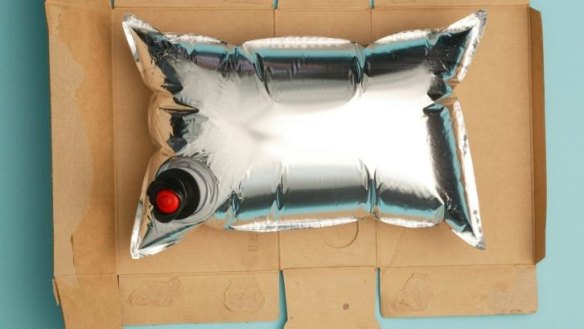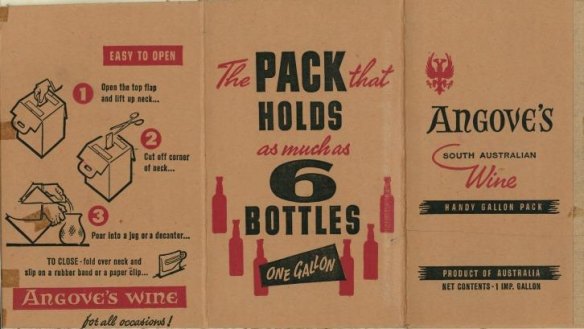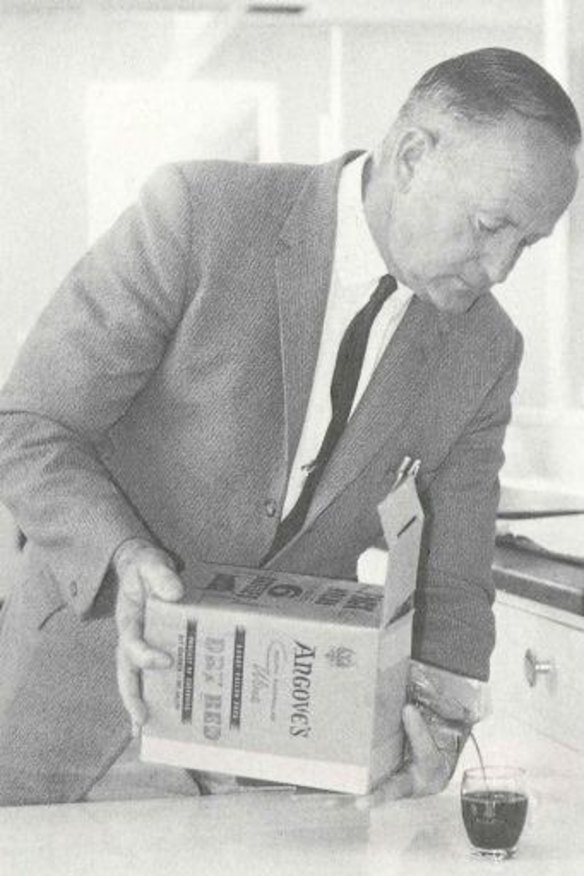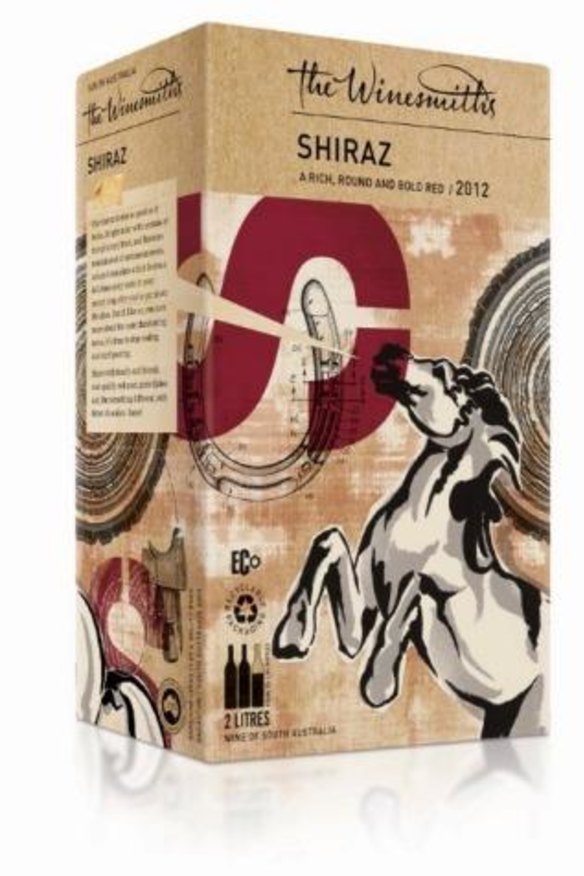Wine in a box: the cask turns 50

My relationship with cask wine began and ended with a cask of Fruity Lexia. Like so many '80s babies, my first drinking experience involved a $4 box of goon and eight hours of regret.
But few of us knew we were suckling on the bladder of a mighty Australian invention: South Australian grape grower Thomas Angove conceived the cask – a resealable plastic bag inside a cardboard box – in the 1960s.
Until then most wine in Australia was sold in bottles and glass flagons, which broke easily and often, and exposed the wine to air, causing faster deterioration.

On April 20, 1965, Angove patented his ground-breaking design, and in November that year the first one-gallon packs were released to the public.
The cask had a few problems early on with leaks and pouring, but improvements were made over the years, including a new tapping device. (The original packaging required the drinker to cut the corner off the bag and reseal it with a clip.) Today, Angove's design is used by winemakers around the world.
The cask is credited for rerouting many beer drinkers down the grape-trodden path, and it certainly has its advantages: the collapsible bag keeps wine fresher for longer; it's cheaper (partly because it's still taxed so lightly); it has a smaller carbon footprint than glass; and a box tucks under the arm far more securely than a bottle. And let's not forget all those uses for an empty goon bag (hands up if you've ever sailed the seas on a shiny silver goon raft?).

This year, Angove's design turns 50. But with consumers becoming increasingly wine savvy, is there still a place for this Aussie icon?
Since those halcyon days of the '80s when chateau cardboard graced so many kitchen benches and camping tables, its consumption has dropped steadily. Domestic sales have been falling by around 6 per cent each year, according to the Australian and New Zealand Grapegrower and Winemaker's 2013 Domestic Market Update.
"Its popularity has declined enormously," Good Food wine writer Huon Hooke says. "During the first decade or so I was writing about wine [in the 1980s], cask wine was around 50 per cent of the total wine market in Australia."

That figure has dropped to about 33 per cent, according to the December 2014 Aztec Liquor Outlook report on Australia's off-premise liquor market (commissioned by Wine Australia).
Nevertheless, one in three glasses is not an insignificant amount. But does that mean it's good wine? And can it ever be as good as bottled wine?
"Most really wine-interested people, including winemakers, view cask wine as a separate product with a separate market distinctly apart from quality wine," Hooke says. "It has fallen off the radar for me."
So perhaps the comparison between box and bottle isn't relevant, given it's a bit like comparing a Hyundai Excel to a Lexus – the latter will always go faster and feel nicer, but sometimes you just need to get from A to B no matter how bumpy the ride.
What, then, does the future hold for the old bag-in-a-box?
"There is a small 'premium' cask market, mostly in two-litre format, which may still have a little growth potential," Hooke says.
The Yalumba-owned Winesmiths, for example, are clearly targeting a young, wine-savvy market, with some decent drops housed in good-looking uncoated-cardboard casks made from recycled materials.
In a recent article on bargain wine buys, Good Food wine writer Ralph Kyte-Powell suggested two-litre casks were the best quality, particularly those from The Winesmiths, Yalumba and DeBortoli.
And to mark the 50th anniversary of the wine cask, DeBortoli, Yalumba and Accolade Wines will launch a range of new products throughout the year.
The chair of the Australian Grape and Wine Authority, Brian Walsh, says: "Many of the same benefits of the cask apply today as they did in 1965 when Tom Angove invented it. It's well suited for many social occasions. It offers good value … And is convenient when you only want a glass or two, and not a whole bottle."
Whatever the future brings for this noble Australian invention, there'll always be the goon raft. Happy sailing.